A Rude Shock
On an overcast summer afternoon of 20 April 23 the Commanding Officer (CO) Rashtriya Rifles (RR) bore the brunt of initial shock when he lost five of his men in an ambush on a desolate road from Bimbar Gali to Surankot. The weight of such casualties is unbearably heavy on a CO (Old man for the unit irrespective of his age). Within hours the entire sector followed by the entire corps zone would have come alive with a multitude of operations ranging from seek and destroy, cordon and search, ambushes, intelligence collection operations in collaboration with other agencies and so on. The national electronic media was abuzz with the news and some visuals. The social media too became active with videos of burning truck and burning bodies being taken out of the army truck. Next day all the national dailies carried the news. This was followed by some more details almost a week after the event. As the time passes this event will become a part of statistics.[1,2,3,4]
The' Psychology of Barrenness of Peace’ and Insurgency Operations
In his book, ‘War in Ancient India’ V R Ramachandra Dikshitar refers to ‘psychology of barrenness of peace’ in the context of warrior class (kshatriyas) who were forbidden by rules to take up any other profession. Peace for this class was a period of inactivity, retrogression instead of progress.[5] Ramachandra appears to have taken too simplistic a view while describing this phrase. There are infinite number of ‘warrior classes’ groups and nations that thrive on conflicts and wars. This class of nations is either benefitted from the huge defence industries or conflicts provide a reason for powerful constituencies in these nations to justify their existence. Historically wars and conflicts have helped powerful Pakistani constituencies- war mongering politicians and their military establishments. Post 1971 Pakistan realized that conventional war with India means massive blow to both the military and the war mongering politicians. Every time the two-armed forces clashed the Pakistani top leadership lost power. Even when the two armies clashed across the LOC in routine artillery duels before the cease fire agreement came in to practice; it is Pakistan that suffered more [6]. Unfortunately for Pakistan they do not know any other ‘industry’ to bring ‘dollars’ for their nation except creating conflict and looking for aids to fuel these conflicts. There are enough examples to prove this hypothesis- 1965 war with India, helping American intervention in Afghanistan to fight the Russians, helping the Taliban to fight the Americans, fueling insurgency and terrorism in J&K all these activities gives the Pakistani establishment three benefits- keep China amused by acting as their proxy against India, give the US arms industries a reason to dish out arms package and dollars and finally play ‘champion’of nations that still are Islamic theological states.
During recent times the Pakistani establishment has received most severe punishment from India in terms of direct military actions (Surgical strike in Uri sector, air strike in Balakot), international isolation, crippling economic crises and domestic instability. But Pakistan is known to fight with a ‘gun pointing to its head’. Peace and tranquility for them is inactivity, sign of retrogression. Violence for them is sign of progress (getting American dollars and Chinese Yuan). Pakistan is completely oblivious to the glaring fact that more it supports violence more its own people suffer due to economic deprivation and direct violence with in Pakistan. This is the eco system in which Indian security forces conducting operations in J&K have to operate. What can be our strategic responses?
Background to the Ambush
As per media reports South Kashmir (Poonch, Rajouri and Akhnoor Sectors) was dormant till about two years after 5 August 2019 when Article 370 was abrogated. In October 2021 terrorists killed nine soldiers in Bhata Durian close to Poonch. On 16 December 2022 two civilians were found dead just outside an army camp at Muradpur near Rajouri. January this year two suspected terrorists killed seven (targeted killings) and injured 14 in Upper Dangri village of Rajouri District. The April 20 ambush this year that killed five army men has been sixth or seventh incident during the last two years. [7,8,9,10]
What has changed after 5 August 2019 that triggered spurt of terrorist incidents in South Kashmir? First massive decrease in terrorists’ hold in the valley coupled with increasing public support after integration of the state with main land India. Second was move of troops from J&K especially from South Kashmir to LAC with China, post Galwan incident in June 2020. Third India’s increasing international clout. The Indian Home Minister had reviewed security arrangement on 13 April 23, for the G20 meeting scheduled at Srinagar.
India’s Options to Counter Pakistani, ‘Psychology of Barrenness of Peace’
Post surgical strike in 2016 the central leadership has made major changes in strategic approach, political will, military preparation and international maneuvers to deter Pakistan from continuing with its terrorists’ support policy in India. However recent events in South Kashmir show that more needs to be done. There are three overlapping options for India. First, convince Pakistan (especially the people) that peace with India is more beneficial and least cost option for their cumulative prosperity and well being. The Pakistani media reports depicting mood of their citizens is indicative that Indian efforts in this direction are effective. However, in a military controlled pseudo democracy in Pakistan it will be a long time before complete success is achieved in changing the basic psychology of the ruling class in Pakistan.
Second option is to raise the cost of terrorism support activities by Pakistan. India has tried this by taking actions just short of declaring war on Pakistan. While these actions are strategic necessity their impact is limited because Pakistani establishment fights in ‘self destruct’ mode. We may get tempted to stop redeployment of army troops from South Kashmir to the Chinese border assuming that higher troops density in this area will decrease terrorists’ activities. This move will be counterproductive. Available data does not relate higher troops density with low rate of terrorists’ incidents and fatal casualties to the troops. Besides since Pakistan is also China’s proxy, withholding RR formation in South Kashmir will help China in its design.
The third option is removing internal fault lines. In other words, make own security systems so strong that casualties like what happened on 20 April 23 approach ‘six sigma’ quality levels- ‘3.46 in million events probability’ of fatal casualties to Indian security forces in India!! Though it might look impractical if we think that ‘these things happen’ but it is still worth trying. It is this option that we will discuss in some more details.
The Internal Security System that Exists Today
The LOC in South Kashmir is heavily fenced. Almost all types of modern sensors – seismic, thermal, image intensifiers are deployed to track movements across the LOC. Besides Electronic Warfare (EW), dynamic surveillance along and across the likely infiltration routes is most likely in place. This would give the directions, likely positions (if more than two DFs are able to receive transmissions from the infiltrating or supporting groups across the LOC). Add to these the human intelligence (HUMINT) from the agents and own sources. In all likelihood the national agencies like the Research and Analysis (R&AW), National Technical Research Organization (NTRO) would be sharing vital information with concerned Headquarters (HQ)especially when the G20 meet is round the corner and the HM had visited the region on 13 April 23 just a week before the ambush was so successfully sprung.
It is common practice with all security forces to establish surveillance centers at battalion (intelligence Room), brigade (sub sector), division (sector) and corps levels where all these inputs are collated, analyzed and interpreted. Thus, commanders at these levels are (or expected to be) fully aware of what is going on. What emerges from the newspapers reports after the incident is that there were terrorists’ related activities that were picked up in this area. Even a local weekly magazine (Kashmir Central) [11] claims to have published reports indicating presence of terrorists’ groups and their efforts to turn the local population in their favour in South Kashmir. [12] In all probabilities electronic emissions would have been picked up. Even if these emissions were coded these must have revealed the general direction. With some innovative analysis of these signals likely areas can be identified. At the respective surveillance and Joint Operation Intelligence Centers inputs from own and open sources would have been correlated and collated to build a coherent picture.
The Fatal Gaps
There are four specific areas where the gaps between information and action or intelligence set up and operations’ team cause major damages like what happens in most cases whether at Poonch or at Dantewada. First is the misplaced concept and dependence on “actionable information”. It is common refrain when such incidents take place that, ‘though information was available there was no concrete actionable information’. Second relates to fallacy of winning the hearts and minds of people (whamp) operation. This brings in the troops on ground in close contact with the local residents. This may win some friends among the residents but this also exposes the troops to the watchful eyes of the adversary. Third gap is most crucial. The bottom of the pyramid, the troops who are out on operational and administrative tasks generally remain unaware of the critical importance of intelligence picture that is developing in their respective regions and how they need to deal with it. It is here that another aspect of ‘barrenness of peace’ emerges for the modern security forces deployed in such areas. In active conventional operations the region remains live with fire, explosions, air sorties, troop movements for action and so on. The adrenaline flow is high. All precautions and battle drills are followed; the soldier knows and acknowledges that he is in active area. In areas like Poonch, Rajouri as these exist today, there is a deceptive calm. The barrenness of peace lulls the soldiers. They tend to drop guard and that is what invites such tragedies.
The fourth factor that exposes the troops to such dangers is lack of technology integration with soldier on the ground. All the high-tech equipment, communication systems and trained experts focus on the commanders at various levels. The terrorists were supported by drones, high tech communication systems, the men in the truck that was ambushed by them were on their own carrying fruits and food for some adopted village in their sector! India does have technology and the economic muscle to reach the soldier. We need to make a serious endeavour to empower the ‘first soldier who comes into contact with terrorists’ with modern technologies. He should be aware, able to see, hear, and act before being attacked.
Recommendations
Every Information is Important. We need to get over the habit of waiting for ‘actionable information’. In sensitive areas where we lose troops at regular intervals each and every piece of information is actionable. The action may or may not involve launching operations but may suggest prophylactic or precautionary measures to be adopted by forces conducting administrative/operational tasks outside the company bases. Even the locality and HQ defences can be re-oriented/strengthened based on the information. It is quite likely that in the current ambush some tell- tale marks might have been picked up before it was actually sprung. These discrete pieces of information can prompt actions such as prohibiting single vehicle movement even for short distances, grouping escort and quick rection teams for all movements on areas where information indicates likely terrorists’ attack. It is necessary to fix automated audio -visual signals in each vehicle warning the troops of the likely dangers in the area and what action is to be taken. Drone based reconnaissance of designated routes needs to be resorted to. We may argue that drones are not useful in thickly vegetated areas. But then tanks were never considered useful at Zoji La way back in 1948. Someone used these tanks to achieve great results! The primary objectives of all these actions are to ensure (beyond any likelihood of slippages) proper awareness and action preparedness for every individual soldier / group in the base. As an example, modern cars are equipped with audio visual signals to warn the driver about wearing seat belt. On similar lines screens in the driver compartment and in passenger area must keep on displaying audio visuals as per the tactical situation. As the troops/vehicle near a likely ambush site the visuals can give the warning signals along with likely area, audio message can give alerts signals to the look out person in the vehicle to get his weapon ready to fire. Technologies to incorporate these measures for individual soldiers (in their tailor-made mobile phones) and vehicles (AI enabled screens) are easy to install and secure from hacking and jamming. The lead vehicle in a group can pilot a drone with sideways looking camera at heights that it can pick up targets, movements along the road. The least these drills will achieve is sensitize the men that they are in combat zone. Innovative use of available technologies is likely to achieve more (impact) from less (troops’ density).
Avoid Disproportionate Emphasis on WHAMP Operations. As per Hindustan Times of 29 April 23 Report, the terrorists who killed the RR troops were in the area for months.12 They were supported by locals. Police declared the names of three of the over ground workers (OGW)- Nisar Ahmad, Farid Ahmad and Mushtaq Ahmad. Names of three more who helped have not been made public. These OGWs received weapons and cash from Pakistan through drones. The weapons were then handed over to the terrorists. No amount of WHAMP operations by the SF can change the hearts and minds of people who are indoctrinated (and paid handsomely). At times familiarity of combat troops with such local residents makes the soldiers complacent and careless in conduct of operations. Residents in an insurgency prone area are just that ‘residents’ and not friends. They need to be ‘respected’ and ‘suspected’ at the same time.
Fight the, ‘Barrenness of Peace Syndrome’
General assumption of troops deployed in terrorism infected areas to ‘no incident for a month or more’ is ‘all is well’. They think that level of hostilities is overhyped and there is peace in the area. While the impact of such a deceptive peace on the Security Forces (SF) is lowering of guard the terrorists on the other hand get impatient to break the monotonous barrenness of peace with a big bang. Hence prolonged peace in the region must be taken as an indication for something big is being planned by the adversary. To counter this SF must take initiative to get at the opponents before they launch any operation. In Poonch the SF could have launched operations to nab the OGWs and then home on to the LeT terrorists before they sprung the fateful ambush on 20 April 23. The barrenness of peace must prompt the SF to wrest the initiative from the adversary.
End Notes
[1]Five Soldiers Killed in J&K Terror Attack, Army says firing, likely use of Grenades. The Indian Express (Mumbai) 21 April 23.
[2]Army Truck Ambushed, 5 Soldiers Dead. The Tribune 21 April 23.
[3]Five Soldiers Killed as Militants attack Army Truck in Poonch. The Hindu 21 April 23.
[4]5 Soldiers killed as terrorists ambush Army Truck in Poonch. The Times of India 21 April 23.
[5]V R Ramachandra Dikshitar, ‘War in Ancient India’, MacMillan and Co Ltd 1944 0761933220
[6]https://www.vifindia.org/sites/default/files/145812085-War-in-Ancient-India-1944.pdf
[7]https://www.vifindia.org/2023/april/26/jammu-and-kashmir-decoding-the-poonch-terrorist-attack
[8]Patrolling up in Jammu after Poonch Terror Attack Hindustan Times 24 April 23
[9]After Poonch Ambush Ultras decamped with jawans’ arms The Tribune 24 April 23.
[10]Dainik Jagran Delhi 24 April 23.
https://upload.wikimedia.org/wikipedia/commons/5/51/Kashmir_Region_November_2019.jpg
[11]The Lapse of Being Laid Back https://kashmircentral.in/kashmir-central-issue-72/
[12]Paid by Drone drops, 6 held for aiding Poonch attackers, Hindustan Times 29 April 23
(The paper is the author’s individual scholastic articulation. The author certifies that the article/paper is original in content, unpublished and it has not been submitted for publication/web upload elsewhere, and that the facts and figures quoted are duly referenced, as needed, and are believed to be correct). (The paper does not necessarily represent the organisational stance... More >>
Image Source: https://www.telegraphindia.com/india/jammu-and-kashmir-terror-attack-top-security-officials-visit-site-as-search-operation-intensified-soldiers-cremated-with-full-military-honours/cid/1931656


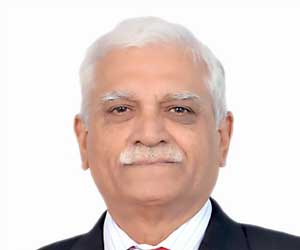

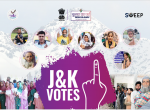

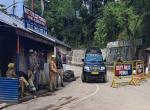
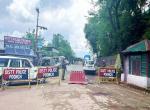

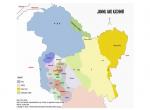
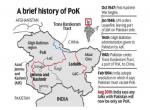
Post new comment